National headline GCSE results were published for 2023 last week. This saw grading standards return to those from 2019, the final year before exams were cancelled due to COVID.
But although results at a national level were similar to 2019, this was less the case between regions. The 2023 data showed that London, already the highest achieving region, had improved relative to other regions.
This has led the former Schools Recovery Commissioner to question whether the government’s post-covid recovery plan had any effect at all.
Early Results Service
The data in this blog is from FFT’s Secondary Early Results service/
Free to all Aspire schools, this year’s service has been extended to include A-levels as well as KS4.
Aspire schools can upload results now.
Not an FFT Aspire user? Learn more here.
Data
The data presented last week was based on published JCQ statistics for England (PDF). This showed the percentage of all entries in all subjects graded 9-7 and 9-4 by pupils of all ages in all types of centre.
This means, it contains data on early (Year 10) entries as well as resits in English and maths.
In addition, independent schools are included. Analysis of the school-level Key Stage 4 data for 2022 shows that 11% of pupils in London’s schools are in the independent sector, compared with 8% in the rest of the country.
Typically, we would report on the attainment of pupils at the end of Key Stage 4 (almost all of whom are aged 16) in state-funded schools only.
In addition, the JCQ measure based on entries in all subjects combined is not widely used in schools.
Using data collected from 1,500 schools as part of FFT’s Early Results Service, we can see whether the national pattern revealed by JCQ data using more familiar indicators and based on the exam cohorts of state-funded schools.
Attainment of grade 9-4 in English and maths by region
Firstly, we look at the percentage of pupils who achieved grades 9-4 in both GCSE English and maths in 2023. We compare this to the figure for 2019 using the same set of schools.
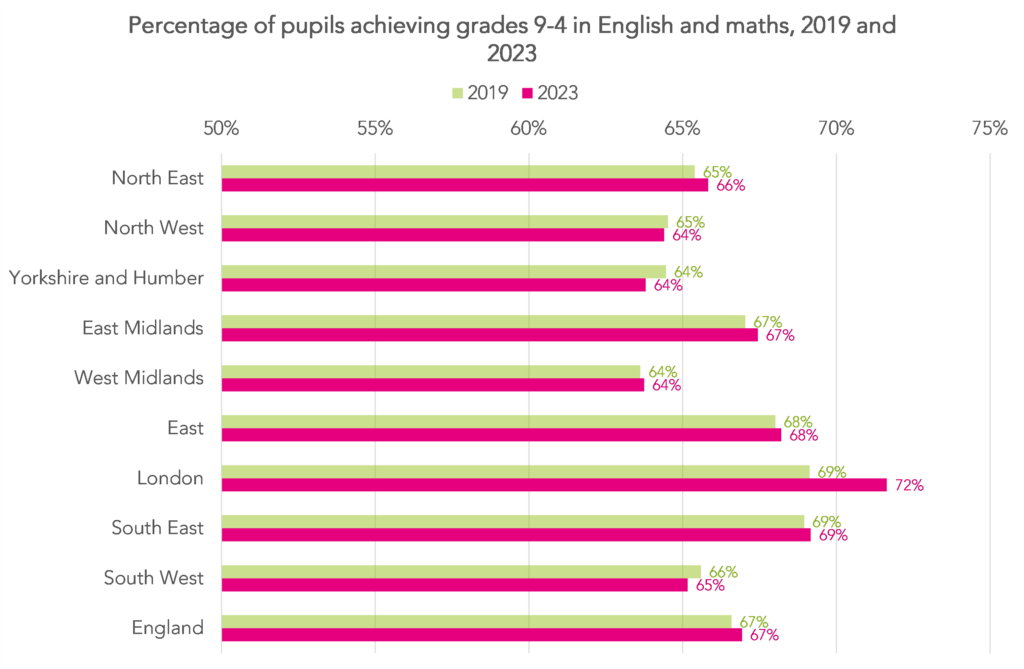
67% of pupils in the sample achieved grade 9-4 in both English (best of language or literature) and maths in 2023, almost exactly the same as in 2019. The national average that year was 65%, hence the sample is slightly higher attaining.
The remaining 33% achieved lower grades. These pupils are often (but wrongly) said to have “failed”[1]. However, they are required to enrol on either (or both) English and maths courses as part of their programme of post-16 study. Some of these will go on to achieve GCSEs in November, others might have to continue for longer.
London was (just about) the highest attaining region among the schools in the sample on this measure in 2019. An additional 3% of pupils achieved 9-4 in English and maths in 2023.
We should remind ourselves that regional differences mask variations at more local levels, not only between local authorities but also areas within (or cutting across) local authority boundaries.
It’s not just about higher attendance in London
As we have showed previously, attendance in London’s secondary schools has been higher than that in other regions since the pandemic. 9.7% of sessions were missed in 2022/23 in London’s schools. In the South West, the figure was 11.7%, with other regions in the 10.5% to 11.4% range.
However, it’s not just about attendance as the following chart shows. We calculate pupil absence across Key Stage 4 (strictly speaking, absence in 2022 and 2023) and summarise the percentage of pupils who achieved grades 9-4 in both English and maths.
Across all absence bands, attainment in London was slightly higher. Some of this will be associated with differences in prior attainment and demographic characteristics. However, it will only be later in the year when we will be able to dig into this in more detail.
Grades achieved in London compared to the rest of the country
The following charts show the grade distributions in GCSE English language and GCSE mathematics in London compared to the rest of the country among our sample of secondary schools.
In both subjects, there is evidence that the distribution in London is to the right of that of the rest of the country. In English, the modal grade is 6 compared to 5 elsewhere. 32% of pupils in London achieved a grade 7 or higher in English (23% elsewhere) and 28% achieved that standard in maths (19% elsewhere).
The average grade in English in London was 5.49 compared to 5.00 in the rest of the country, a difference of 0.49 grades. In 2019, this difference was 0.38 of a grade.
The average grade in maths in London was 5.00 compared to 4.61 in the rest of the country, a difference of 0.39 grades. In 2019, this difference was 0.27 of a grade.
In other words, attainment improved in London by just over 0.1 grades relative to the rest of the country between 2019 and 2023.
The disadvantage gap looks to have widened although there are issues affecting comparability over time
The Department for Education will publish its official disadvantage gap measure in the Autumn.
Here, we look at disadvantage gaps in English and maths among the schools in our sample.
This is compounded by issues affecting the comparability of disadvantage data over time arising from the changes to free school meals eligibility introduced by the roll-out of Universal Credit. We wrote about this previously and colleagues at NFER subsequently wrote a lengthier report.
The consequence of this change is that we can’t be confident that the disadvantaged group in 2023 is comparable to that of 2019.
Taking the results at face value, however, suggest that the disadvantage gap has increased slightly since 2019 in English more so than mathematics.


The change in disadvantage gap between regions is somewhat variable. In fact, in some regions the gap appears to have closed in maths. But the gap in the North East appears to have widened the most in both English and maths.
The North East has traditionally been the region with the highest levels of long-term disadvantage after London. However, the two regions differ hugely in other demographic characteristics. There is a far higher proportion of young people in the North East from ethnic backgrounds that are associated with lower attainment and progress.
London is very different to the rest of the country. It was already higher attaining prior to the pandemic. Trying to understand its rapid improvement in performance in the earlier part of the century is a topic that has enchanted economists for some time (see here for an introduction).
But now we might want to understand more fully how it appears to have withstood the Covid-19 pandemic better than other regions.
- This is expanded upon in this ASCL blog
Want to stay up-to-date with the latest research from FFT Education Datalab? Sign up to Datalab’s mailing list to get notifications about new blogposts, or to receive the team’s half-termly newsletter.

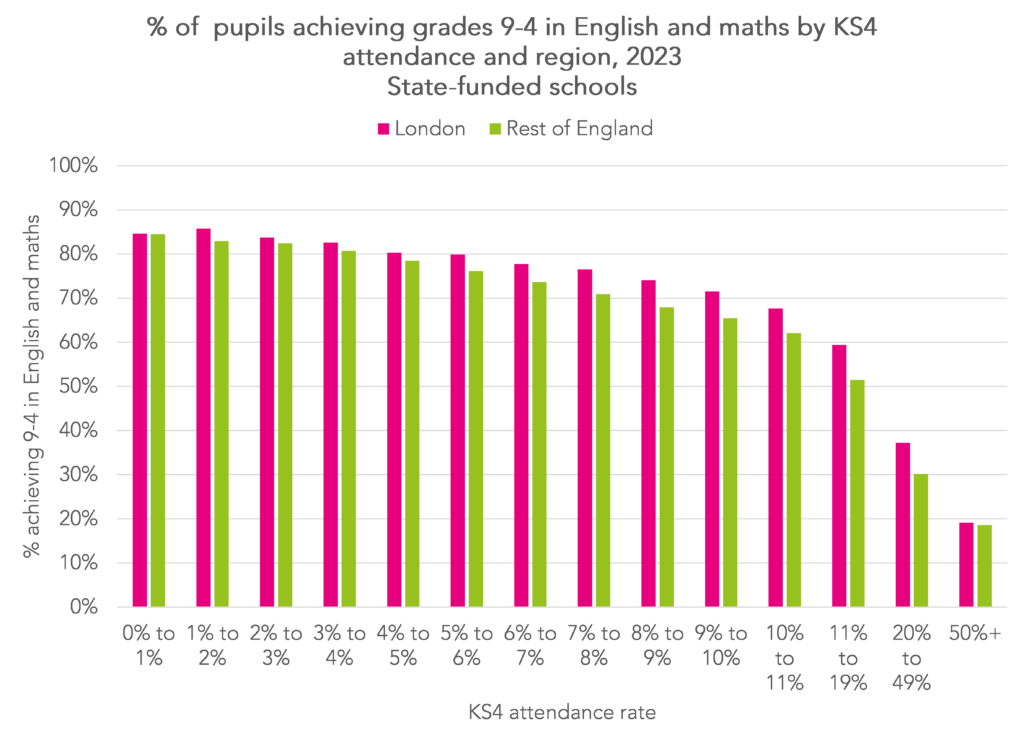
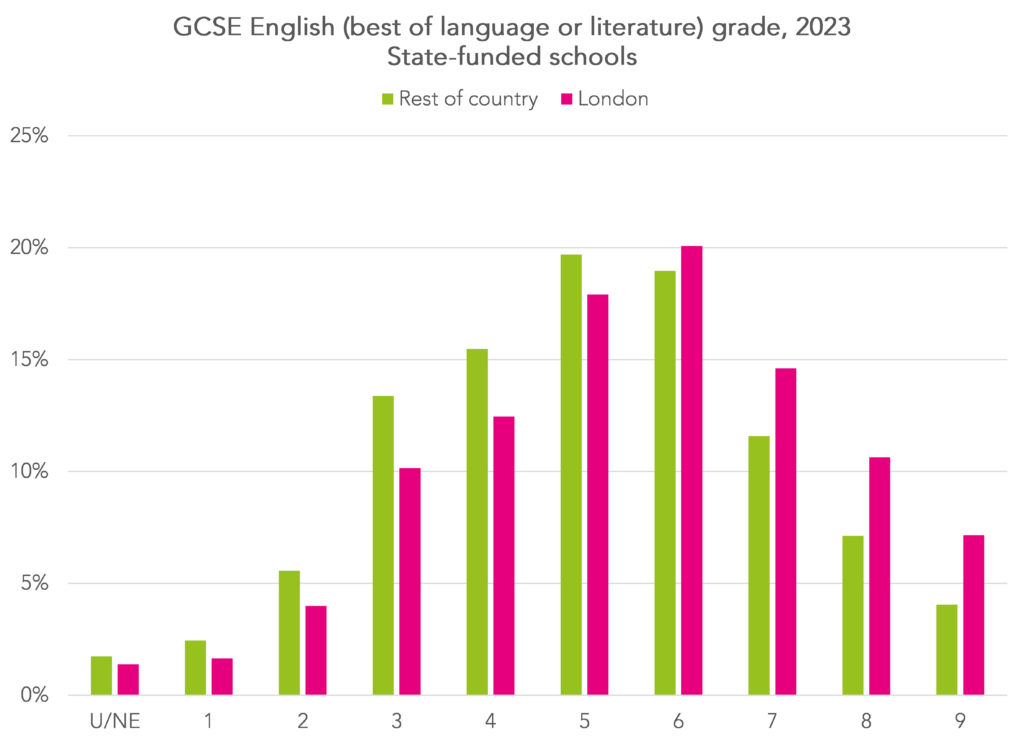
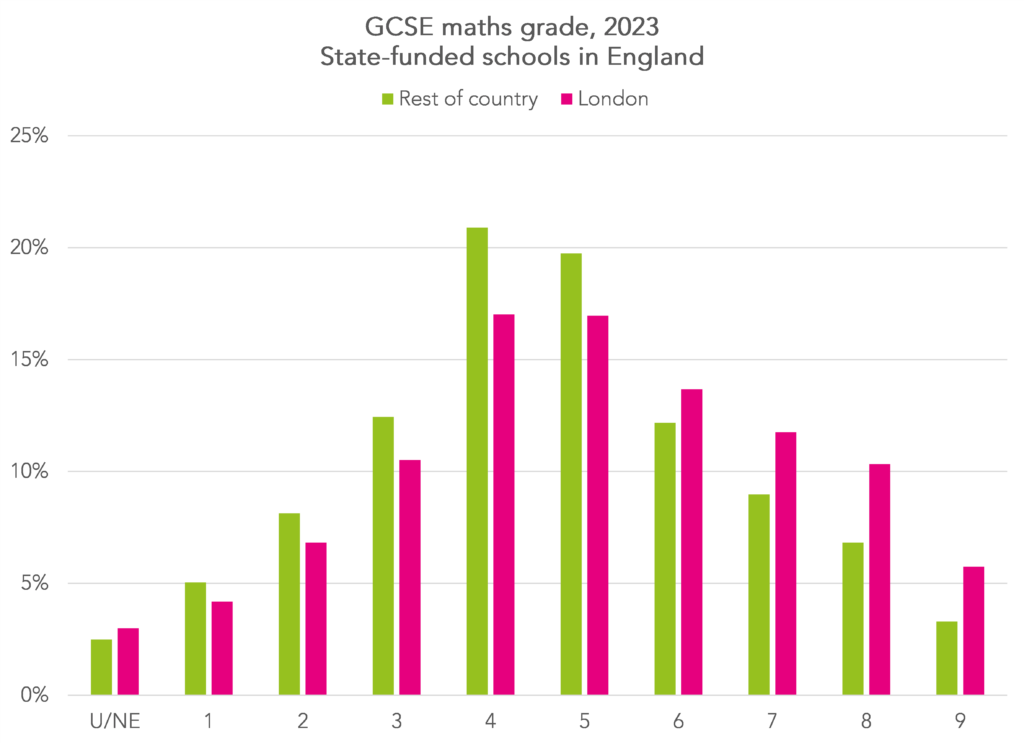

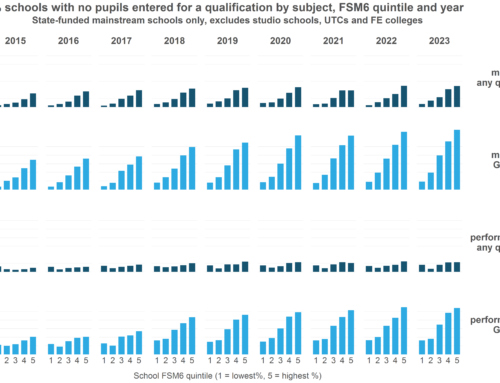
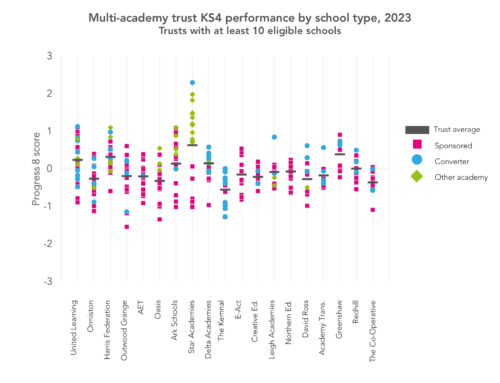
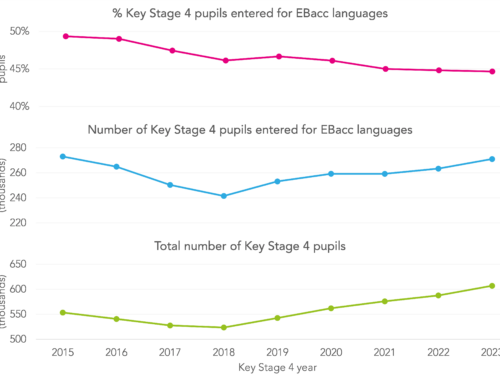

The evaluation of the effectiveness of the government’s catch-up programme needs to examine the impact on schools having to match the financial support from their budgets. Many schools did not participate due to lack of funds. Funding arrangements for schools in London are weighted in their favour so it should be no surprise that this gap exists.
Yes- this is a very fair point
Should there be some charts in the disadvantaged section – looks like a placeholder but no chart…
Doh! Thanks for letting us know. Now fixed.
It would be good to see data that cross-references parental highest educational achievement. I’ve always assumed that the ‘London effect’ is in part based on the fact that the city has long been a highly specific magnet for graduates, sucking them out of other regions (and states) while they are still in their twenties. Even if they are not vastly wealthy when their children are secondary age (thanks in part to the obscenely high housing costs and pegged state salaries), you would expect the offspring of graduates to perform relatively better on a big scale. It would be interesting to see if there is any recent data correlating this. I’m guessing that it can only be examined by sample datasets rather than comprehensive analysis – is parental highest qualification on pupil datasets?